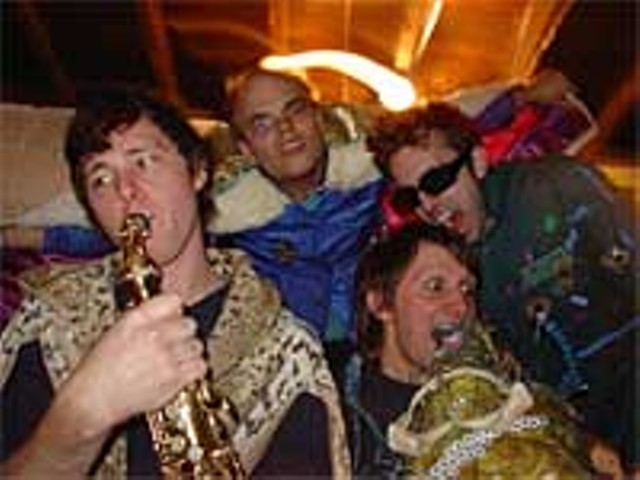For a nature film, this documentary leaves you thinking more about man than beast. Hyperactive bear advocate Timothy Treadwell, an activist gone wild, is the tragic hero of Grizzly Man, a movie made mostly out of video diaries from five of his 13 summers spent living among grizzlies in Alaska’s Katmai National Park and Reserve — living, that is, until the bears ate him alive. Some call Treadwell a saint, others a lunatic. The film depicts him as neither; rather, provocative German director Werner Herzog’s portrait takes a middle ground, and the argument over whether Treadwell’s expositions into the wilderness saved any bears becomes secondary.
Also taking second billing are the actual bears, even though they devour the main character, who spends the better part of the film trying to convince us that they’re in peril. This isn’t a film about a species’ struggle to survive against insurmountable odds, like a certain group of plucky marching penguins. Herzog’s telling of Treadwell’s story is philosophical, personal and metaphysical. He uses Treadwell’s life and demise to discuss man’s immeasurable capacity for passion and the line between madness and genius, and to debate whether the fundamental nature of the universe is chaos or harmony.
Herzog pared down 100 hours of Treadwell’s footage to piece together the film. It had been Treadwell’s dream to make his own movie as he spent his summers filming the bears, which he anthropomorphized to an extreme, calling them his friends, his family and his raison d’être. Herzog also included incredibly stilted, seemingly well-rehearsed interviews with folks like Treadwell’s ex-girlfriend, a pilot who flew into the park, the emergency worker who hauled away his remains, and the coroner who pieced together the details of his death. Their insights, including the coroner’s description of the death scene, are morbidly fascinating, but these bit players’ deliveries are painfully wooden, and look even more so when coupled with Treadwell’s hyperkinetic rants. But that’s really the only nit to pick, because Herzog handles the rest of the material, including his own narration of the film, so well.
With such a grim subject at his disposal, he deftly avoids making a grim exercise in voyeurism. While Herzog had the chance to hear the audio Treadwell recorded of his own demise (the attack came so suddenly he couldn’t get the lens cap off), the director thankfully leaves those sounds out of the film. Instead, the director steps in front of the camera to listen to the tape, and his reaction explains enough.
Treadwell’s footage of bears nuzzling, fighting and wrestling is remarkable, especially coming from an amateur filmmaker shooting mostly by himself, often just with handheld video in treacherous conditions. But the failed-actor-turned-activist is so much larger than life that he upstages his furry friends. His devotion to them is obsessive; he gives them cutesy names, analyzes the inter-bear relationships as if he were gossiping about friends, and even admits he feels more kinship to the grizzlies than to the humans in his life in the real world.
Herzog doesn’t hold back showing Treadwell’s personal turmoil. The clips reveal how he ached for acceptance but couldn’t stand people or function well in normal society. His instability grows. He embarks on raving tirades about animal rights, women, God and heaven, but the next minute he chirps cheerfully to the camera. If it ever seems like Herzog is taking advantage of Treadwell’s instability, one must remember that for most of the footage, Treadwell, not Herzog, is running the camera. Treadwell even recorded his own death. He thrived on attention. He wanted these tapes to be seen.
Showing at the Maple Art Theater (4135 W. Maple Rd., Bloomfield Hills; 248-263-2111).
Clare Pfeiffer Ramsey writes about film for Metro Times. E-mail [email protected].





